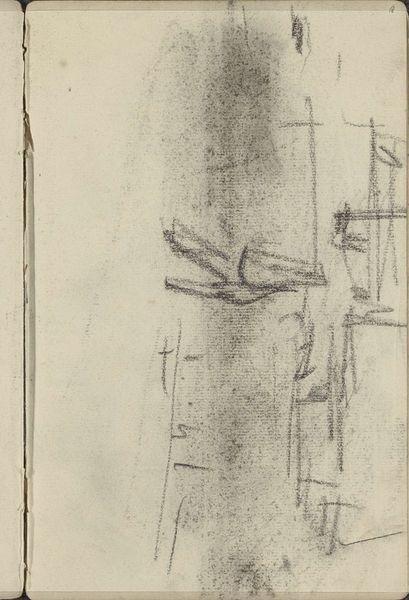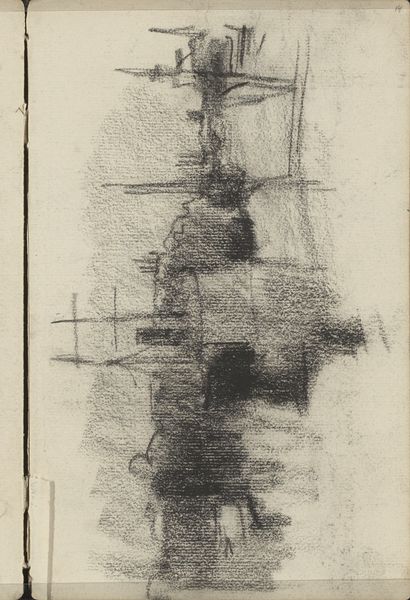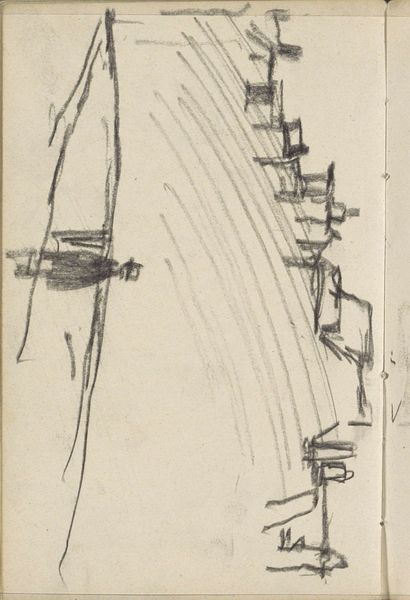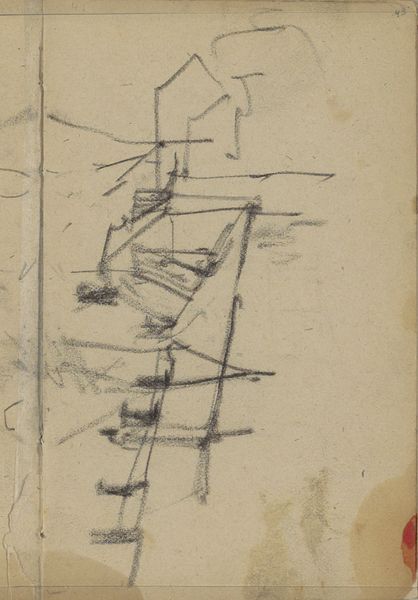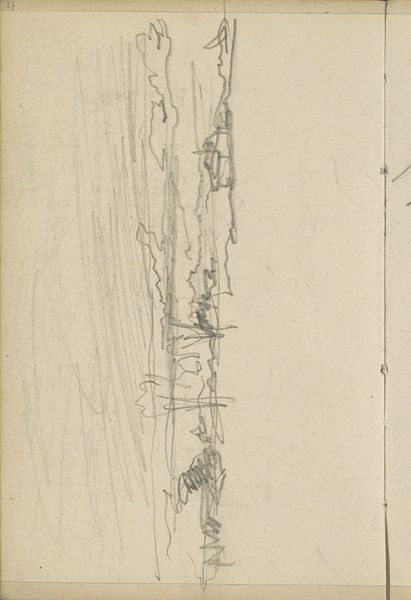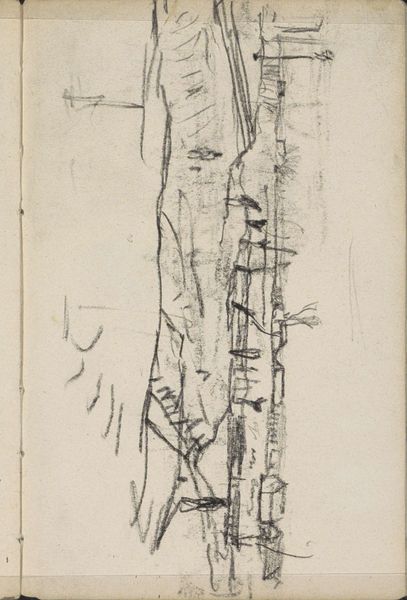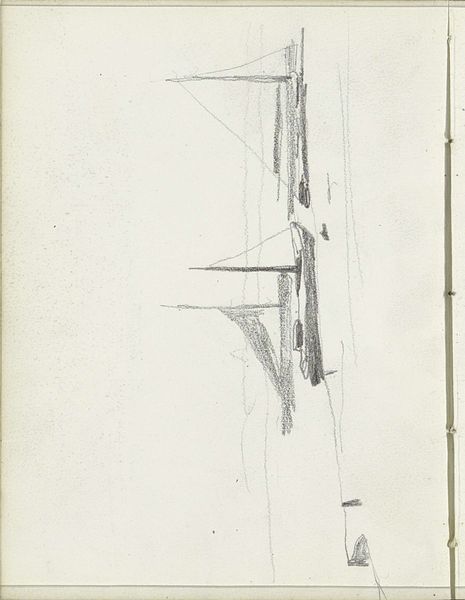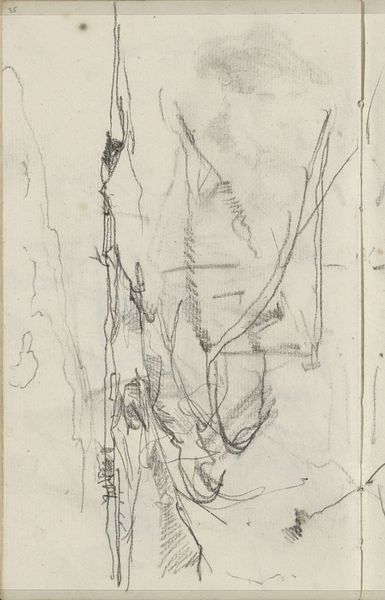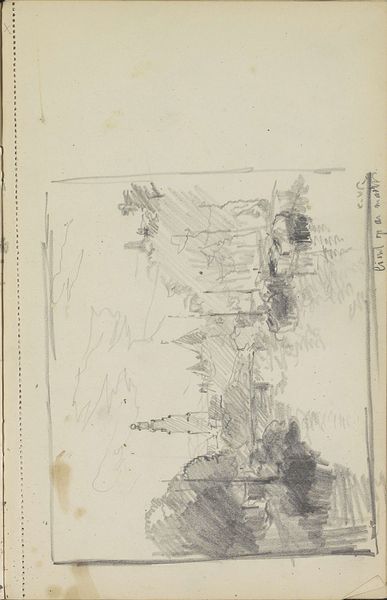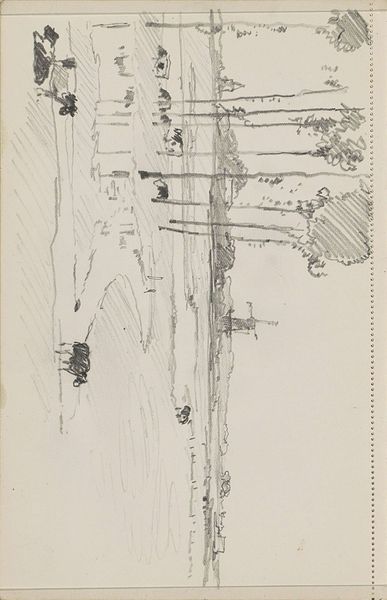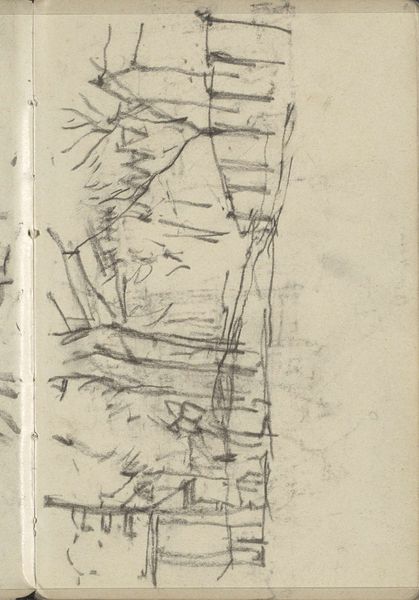
Copyright: Rijks Museum: Open Domain
Editor: Here we have Breitner’s "Gezicht in Amsterdam," a graphite drawing created sometime between 1886 and 1923. The composition feels really unusual, almost claustrophobic with those strong vertical lines. What do you make of it? Curator: The interplay of positive and negative space is striking. The heavy application of graphite on the left creates a dense, almost impenetrable mass, while the right side remains comparatively open, defined by delicate lines. Editor: Yes, the contrast is stark! It makes you wonder about the balance – or lack thereof – Breitner was aiming for. Was he deliberately disrupting traditional notions of composition? Curator: Precisely. Note the rhythm established by the marks. Observe how the textures build depth. The suggestive quality of the lines invites us to complete the image. Can you trace that visual process, identifying those aesthetic choices? Editor: I see what you mean about the textures adding depth. It’s more than just a cityscape; it’s an exercise in mark-making. I was too focused on the subject initially and didn’t really look at the techniques, which are so simple and complex simultaneously. Curator: Indeed. The very materiality of the graphite—its capacity to create both delicate lines and dense masses—is paramount here. The image transcends its subject matter, becoming a meditation on the potentials inherent within the medium. This exemplifies formal qualities prevailing over mimetic representation. Editor: So, by looking at the line work and contrast, it becomes clear that it’s about the method more than the depiction. I wouldn’t have thought of that! Thanks. Curator: My pleasure. Paying attention to such artistic techniques will further inform your understanding and viewing practices in the future.
Comments
No comments
Be the first to comment and join the conversation on the ultimate creative platform.
